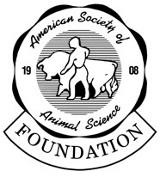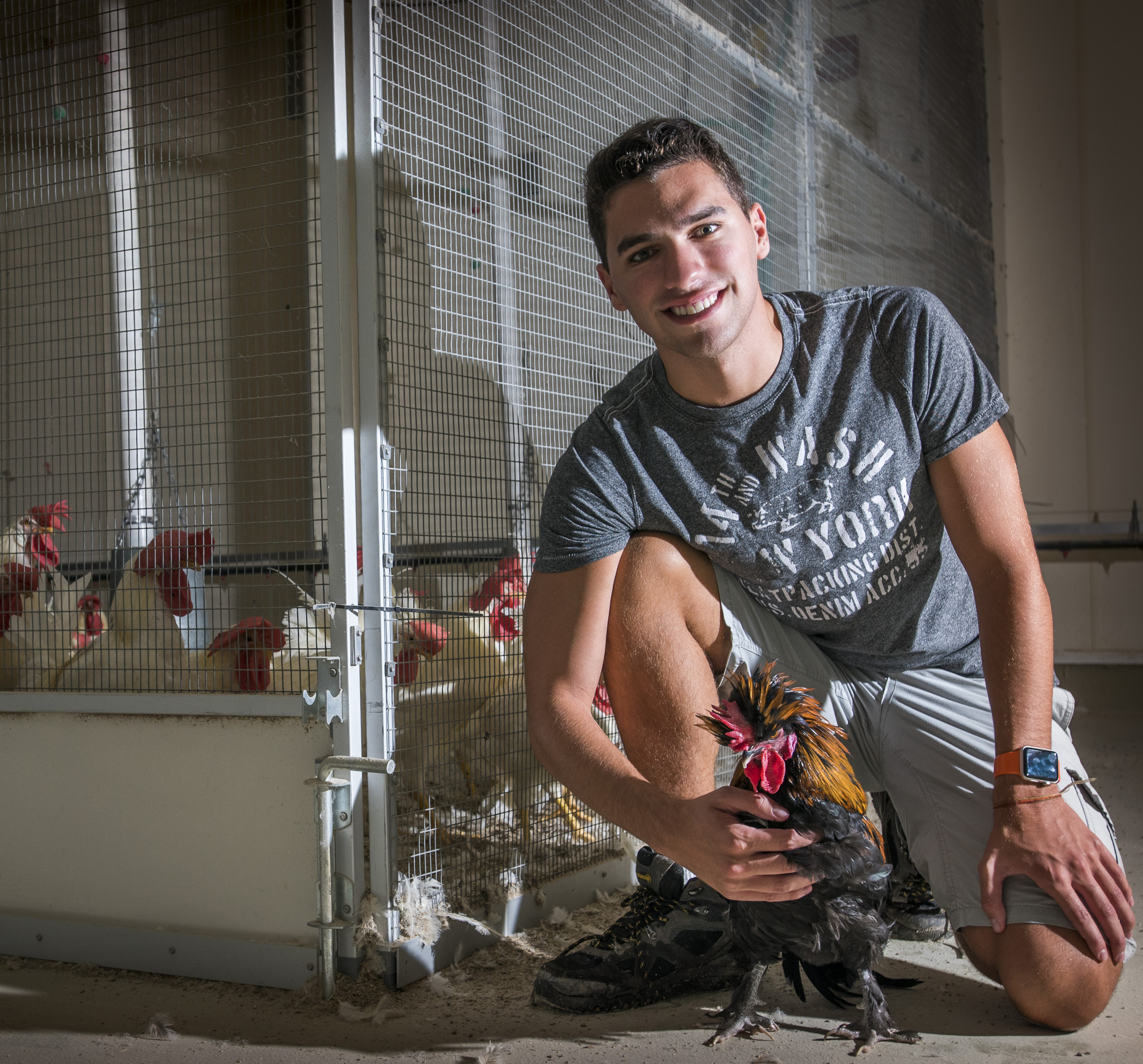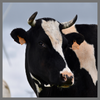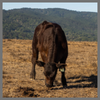-

Nov
14
D.C. summer intern: Maci Lienemann

May 25, 2015 – Maci Lienemann, a junior majoring in animal science at the University of Nebraska, is one of four recipients of the 2015 ASAS Science Policy Summer Internship Program in Washington, D.C. Lienemann will intern with U.S. Sen. Ben Sasse, R-Neb., during her time in Washington, D.C.
“I have a unique set of interests when it comes to livestock, science and policy, so I hope this internship will give me a glimpse of how I can combine those into a future career,” Lienemann said in a recent University of Nebraska-Lincoln press release.
During the internship, Lienemann will work with congressional staff and federal agencies on preparing research and legislative briefings. She will also interact with agricultural constituents.
Funding from the Bob Zimbelman, Harold Hafs, Barb Glenn, Jack Britt, and Louis Boyd Appreciation Clubs will support this summer’s science policy interns.
Read more
-

Nov
14
Tiffany Hebb joins policy interns on Capitol Hill

June 29, 2015 – Tiffany Hebb is a graduate student at Tuskegee University but a native of Washington, D.C. Being raised in the D.C. metropolitan area, Hebb had no prior experience with agriculture. In fact, she initially believed majoring in animal sciences meant studying companion or laboratory animals.
“You can only image how surprised I was to see a goat on my first day of introduction to animal science class, and even more shocked when it defecated right in front of me,” said Hebb regarding her first-ever encounter with livestock.
Yet, her first livestock encounter did not deter her; it sparked a curiosity in the broad world of animal sciences, which turned into an ever-growing passion for the field. As she learned more about agriculture and animal sciences, she wanted to explore all the possibilities of animal agriculture and related sciences.
Currently, Hebb is pursuing a Doctorate degree in Integrative Biosciences and training in Reproductive Physiology. Her project specifically investigates the molecular mechanisms of spermatogenesis in goats. Her career goal is to continue developing as an animal scientist through research and administrative activities that allow her to effectively communicate scientific knowledge.
Read more
-

Nov
14
Pierce Bennett: D.C. Summer Policy Intern
July 27, 2015 – Pierce Bennett, a sophomore studying animal science at Kansas State University, is one of the four students chosen to spend the summer in Washington, D.C. as a Science Policy Intern for ASAS. Currently, he interns in the Legislative Affairs department with the North American Meat Institute (NAMI).
Bennett grew up on a four-generation family farm in western Ohio, raising sheep and managing native wild prairie grass through the CRP program. He also has experience in the pork, beef, and crop industries and currently works at the Kansas State University Sheep and Meat Goat Center.
“As a communications option in the animal science and industry department at KSU, I am attempting to tailor my education to the public relations and policy professions,” said Bennett.
His goals for the internship are to learn how policy makes it from discussion to written work. “I want to better understand all of the current issues we are facing in agriculture, and find out how folks who don’t have an agriculture background perceive those agricultural issues,” said Bennett.
Read more
-

Nov
14
ASAS Science Policy Intern: Olivia Woods
By: Olivia Woods, ASAS Science Policy Summer Intern
July 28, 2016 – Coming directly from a quiet college town in Western Oregon, the pace and intensity of Washington D.C. initially took me by surprise. During my first week on Capitol Hill, I learned the basics of working in a congressional office very rapidly. This is where my previous professional and administrative skills came in handy. On any given day in the office, I am expected to read and file incoming emails, field phone calls, or voicemails from hundreds of constituents, then tally their various opinions for the office’s daily report.
In addition to these administrative tasks, I am trained to give guided tours of the Capitol building to interested constituents. Although an intimidating prospect at first, these tours quickly became one of my favorite parts of the job because they provide the opportunity for me to get out of the office, stretch my legs, and meet some new people.
Read more
-

Nov
14
ASAS Science Policy Internship: Morgan Jones
By: Morgan Jones, ASAS Science Policy Summer Intern
July 28, 2016 – Hello! My name is Morgan Jones and I am currently in the ASAS Summer Policy Internship Program interning under South Dakota Representative Kristi Noem and South Dakota Senator John Thune in Washington D.C. My legislatures have gone above and beyond for the farmers and ranchers of my state, which is important when your state has four cows for every one person.
Being born and raised in Milbank, South Dakota, agriculture has had a large impact on my life. It is my hope that one day I can contribute to this industry. I currently attend the University of Minnesota and am working towards a major in Animal Science with a Pre-Veterinary emphasis and minors in Political Science and Public Health. Although my ultimate goal is to become a veterinarian, I have always been curious about the policies and laws affecting animal science. This interest led me to shadow Dr. Oedekoven, South Dakota’s State Veterinarian, to see how these two passions could be combined.
My experience in Washington D.C. has gone above and beyond my expectations. My first week at the capitol I attended a House Agricultural Committee hearing and ended up sitting next to a lobbyist from the American Veterinary Medical Association. I have also gained valuable legislative knowledge, in addition to connecting with South Dakota constituents. I look forward to what the rest of my internship entails!
Read more
-

Nov
14
ASAS Policy Intern: Cordelia Hiers
By Cordelia Hiers, ASAS Science Policy Intern
July 28, 2016 – Every good dream contains hopes, goals, and aspirations, all of which fall subject to time. Starting at the age of eight years old I have dreamed of living in Washington D.C. In the past, when dwelling on my dream, I would have told you with certainty I was going to become a zoo veterinarian. I moved from dream to dream with fluidity from a zoo veterinarian, to a farrier, to an equine vet, as well considering equestrian management. My common ground: agriculture. It was not until later in my high school career that I discovered my fondness for the agriculture industry was irrevocable.
Following high school graduation, I attended Murray State University in the state of unbridled spirit, Kentucky. The Hutson School of Agriculture at Murray State University consists of a small team of faculty and staff who are dedicated to fostering their students’ dreams. This group of faculty emphasizes an unmatched precedence in the future of their students and they harbored my ambitions. I received my education both inside and outside of the classroom that set me on a curricular path toward my future career.
I am proud to say that I have a received my Bachelor’s of Science in Agriculture with a minor in Political Science; a combination of my passion for agriculture and my desire to advocate on its behalf. Fourteen years later I am in Washington D.C. interning with Animal Agriculture Alliance, an organization dedicated to bridging the communication gap between farm and fork. Currently, I have just begun my second week with the Alliance and the experience thus far has proved to be invaluable.
Read more
-

Nov
14
ASAS Science Policy Intern: Alexandra Cantrell
By: Alexandra Cantrell, ASAS Science Policy Summer Intern
July 28, 2016 – After spending two months in Washington D.C. I have come to love the rich history of the city itself and the impact that the people living in this district can have on the world. I always knew that Capitol Hill dictated the way our country is run, but it did not truly resonate with me until I started touring the halls of our government buildings. I now understand that our nation’s capital has a profound effect on our culture and the way our society thinks. My first realization of this was in the Supreme Court building, which showcases the history of our past justices. To portray the development of law, throughout the building there are friezes of different philosophers and great lawgivers of history such as Moses, Aristotle, and Chief Justice John Marshall.
Another exhibit that caught my eye was the showcase of Justice Sandra Day O’Connor. I had the opportunity to meet her once when she attended the opening of the Cowgirl Hall of Fame in Fort Worth. It was great to have a chance to learn about her in more detail. As a fellow Texan, rancher, and woman, she inspired me with her dedication to the law. Even though she was probably not an Animal Science major, I consider her a role model for what people in agriculture can accomplish in government and policy.
Under the checks and balances within our government, the legislative branch is intended to make the laws, the executive branch is meant to enforce the laws, and the judicial branch must interpret the laws set by the government. Many of the cases heard by the Supreme Court over the course of our history have shaped who we are as a nation today and it humbled me to walk through the displays within the building.
Read more
-

Nov
14
Jamee Bell recaps D.C. internship
My passion for agriculture began when I was just a freshman in high school. I was accepted into the James Madison Agriscience Magnet Program where I began to study agriculture. I went into college knowing what I wanted to study and had already gained four years of meaningful, hands-on, practice.
Fast forward to completing my internships and earning a degree after studying agriculture for nearly ten years, I reflect on what prepared me to be successful in my internships and there are three things that immediately stand out to me: an ability to effectively communicate, an understanding of my field, and a willingness to continually learn. My predominant role as an ASAS Science Policy Intern was communication— communicating with leaders within the organization, with members, and readers. Within my congressional office, communicating well with office staff, members of congress, and especially constituents was a key aspect of performing well. What prepared me to communicate well with others, was my experience in customer service. A job as simple as managing the front desk at a water park resort taught me how to be patient, to ask the right questions to find solutions, and to have proper decorum. Another major aspect of interning for the American Society of Animal Science as a Science Policy Intern is understanding what major or current issues agriculturalists are facing and finding sources that you may continually refer to in order to remain informed.
Although I spent a majority of my internship studying crop insurance rather than an animal science based issue, I was able to attend briefings and find resources that I could learn more from. In retrospect, I would have chosen an animal science related issue to follow throughout my internship and covered that issue in my previous editorials. However, most importantly, my foundation had been established and my willingness to learn was ever-present. Although crop insurance was not a familiar topic to me, the experience has diversified my agricultural knowledge and has taught me that there is more to agriculture than livestock.
Read more
-

Nov
14
Meet one of our D.C. interns: Tyler Madison Roberts

Tyler is a senior earning a dual degree in animal science and agricultural communications and journalism at Texas A&M University.
Raised on her family’s commercial sheep and cattle operation, Tyler developed a love for agriculture at a young age. Growing up, she was heavily involved in both 4-H and FFA, showing lambs and competing in judging and leadership activities across the state.
Tyler continued her involvement in agriculture by participating in a variety of student organizations and activities at Texas A&M. During her three years at the university, she has been an active member of the College of Agriculture and Life Sciences Student Council, Pi Beta Phi Sorority, Saddle & Sirloin, Aron and Mary Lois Savell Leadership Mentor Group, Study Abroad, and the 2016 Texas A&M Meat Judging Team. In 2015, Tyler testified to the Natural Resources Committee at the Texas State Capitol in Austin.
Read more
-

Nov
14
Meet D.C. intern Ben Rietmann

We are pleased to introduce you to Ben Rietmann, Oregon State University. Ben is one of six ASAS Science Policy interns currently in Washington, D.C. Ben is interning with the USDA’s National Institute of Food and Agriculture (NIFA).
Read more
-

Nov
14
Meet one of our D.C. interns: KathrynAnn Fields

We are pleased to introduce you to KathrynAnn Fields, one of six ASAS Science Policy interns. KathrynAnn will be interning in the Washington D.C. office of Congressman John Carter.
KathrynAnn received her Bachelor of Science and Master of Science degrees in Food and Resource Economics from the University of Florida in 2013 and 2015, respectively. In August of 2016, she joined the Bush School of Government and Public Service at Texas A&M University where she will receive a Master’s of Public Service and Administration with an emphasis in agricultural policy in May 2018.
KathrynAnn is a native of Gainesville, Florida with a family ranch background. She is a member of Gamma Sigma Delta Honor Society and Alpha Zeta Agriculture Honor Fraternity. She has received numerous scholarships and awards. In spring 2015 she received a scholarship to attend the International Livestock Forum in Fort Collins, Colorado and in spring 2016, to attend the International Livestock Congress Conference in Houston, Texas.
Prior to attending the Bush School, she completed an internship with the National Cattlemen’s Beef Association in Washington, D.C. in spring 2015 where she learned how a lobbying organization affects agricultural policy.
Read more
-

Nov
14
Meet one of our D.C. interns: Alyssa Condon

ASAS has chosen six Science Policy interns for summer 2017. We are pleased to introduce Alyssa Condon, who is interning in the Washington D.C. office of Congressman Joe Courtney.
Alyssa writes:
I am going to be a senior at the University of Connecticut. Currently, I am double majoring in animal science and resource economics. I originally entered UConn as a pre-vet student, but during my studies I fell in love with agriculture and changed my course.
On campus, I am a member of Sigma Alpha, the professional agriculture sorority. This past year, I served as philanthropy chair, coordinating our community service events. I also served as secretary of UConn’s chapter of Block and Bridle, and next year will be the Vice President of Dairy Club. I’m also an ambassador for the College of Agriculture, Health, and Natural Resources. As an ambassador, I represent the college at open houses and speak to prospective students about choosing UConn.
Read more
-

Nov
14
Meet one of our 2017 D.C. interns - Rachael Buzanowski

Rachael writes:
I am from Pompeys Pillar, Montana, where I grew up on my family’s cattle ranch. I plan to continue being involved in the operation while also pursuing a law career with the hopes of being involved in a rural practice.
I am a junior at Kansas State University where I am majoring in Animal Science. This is my second semester at KSU. I was previously enrolled at Butler Community College in El Dorado, KS, where I received an Associate Degree in Agricultural Sciences while competing on the track and field and volleyball teams. In track I earned All- American honors three times for my performance in the pole vaulting event at the National Junior College Athletic Association National Championships.
Read more
-

Nov
14
Catching up with D.C. intern Rachael Buzanowski

Here's an update from Rachael Buzanowski, one of our D.C. interns who is spending her summer in the office of U.S. Senator Daines.
Read more
-

Nov
14
Meet Policy Intern Daniel Munch

Daniel Munch, one of the ASAS Policy Interns, has written about his summer experience. Read more on how Daniels summer went in Washington, D.C.
Read more
-

Nov
14
Meet Policy Intern Stephanie McBath

Stephanie McBath, one of the ASAS Policy Interns, has written about her summer experience. Read more on how Stephanie's summer went in Washington, D.C.
Read more
-

Nov
14
Meet Policy Intern Elizabeth Frey

Elizabeth Frey, one of the ASAS Policy Interns, has written about her summer experience. Read more on how Elizabeth's summer went in Washington, D.C.
Read more
-

Nov
10
Interpretive Summary: Characteristics of ruminal microbiota and metabolome in Holstein cows differing in milk protein concentrations

This study aimed to assess the ruminal microbiome, metabolome, volatile fatty acid concentrations, and amino acid profiles of Holstein cows with different milk protein concentrations. Previous studies have reported that ruminal microbiota can affect the lactation performance of dairy cows. However, little is known about the composition and function of ruminal microbiota in dairy cows differing in milk protein concentrations.
Read more
-

Nov
10
Interpretive Summary: Clinical and microbiological effects in high-risk beef calves administered intranasal or parenteral modified-live virus vaccines

Our objective was to determine the safety, efficiency, and effects on immunity and nasal shedding of respiratory pathogens for high-risk cattle administered an intranasal (IN), trivalent (infectious bovine rhinotracheitis virus [IBRV], parainfluenza-3 virus [PI3V], and bovine respiratory syncytial virus [BRSV]) respiratory vaccine with parenteral, bivalent bovine viral diarrhea virus (BVDV), or a parenteral, pentavalent (BVDV type I and II, IBRV, BRSV, and PI3V) respiratory vaccine, compared to an unvaccinated negative control.
Read more
-

Nov
10
Interpretive Summary: A proof of principle study investigating the effects of supplemental concentrated brewer’s yeast on markers of gut permeability, inflammation, and fecal metabolites in healthy non-challenged adult sled dogs

This study evaluated the effects of concentrated brewer’s yeast on gut health in dogs. Nineteen Siberian Huskies and one Alaskan husky were blocked and randomly allocated to one of two groups. Treatment dogs received a yeast supplement for 10 wk, while control dogs received no supplement.
Read more
 NovD.C. summer intern: Maci Lienemann
NovD.C. summer intern: Maci Lienemann May 25, 2015 – Maci Lienemann, a junior majoring in animal science at the University of Nebraska, is one of four recipients of the 2015 ASAS Science Policy Summer Internship Program in Washington, D.C. Lienemann will intern with U.S. Sen. Ben Sasse, R-Neb., during her time in Washington, D.C.
May 25, 2015 – Maci Lienemann, a junior majoring in animal science at the University of Nebraska, is one of four recipients of the 2015 ASAS Science Policy Summer Internship Program in Washington, D.C. Lienemann will intern with U.S. Sen. Ben Sasse, R-Neb., during her time in Washington, D.C. NovTiffany Hebb joins policy interns on Capitol Hill
NovTiffany Hebb joins policy interns on Capitol Hill June 29, 2015 – Tiffany Hebb is a graduate student at Tuskegee University but a native of Washington, D.C. Being raised in the D.C. metropolitan area, Hebb had no prior experience with agriculture. In fact, she initially believed majoring in animal sciences meant studying companion or laboratory animals.
June 29, 2015 – Tiffany Hebb is a graduate student at Tuskegee University but a native of Washington, D.C. Being raised in the D.C. metropolitan area, Hebb had no prior experience with agriculture. In fact, she initially believed majoring in animal sciences meant studying companion or laboratory animals. NovPierce Bennett: D.C. Summer Policy Intern
NovPierce Bennett: D.C. Summer Policy Intern NovASAS Science Policy Intern: Olivia Woods
NovASAS Science Policy Intern: Olivia Woods NovASAS Science Policy Internship: Morgan Jones
NovASAS Science Policy Internship: Morgan Jones NovASAS Policy Intern: Cordelia Hiers
NovASAS Policy Intern: Cordelia Hiers NovASAS Science Policy Intern: Alexandra Cantrell
NovASAS Science Policy Intern: Alexandra Cantrell NovJamee Bell recaps D.C. internship
NovJamee Bell recaps D.C. internship NovMeet one of our D.C. interns: Tyler Madison Roberts
NovMeet one of our D.C. interns: Tyler Madison Roberts Tyler is a senior earning a dual degree in animal science and agricultural communications and journalism at Texas A&M University.
Tyler is a senior earning a dual degree in animal science and agricultural communications and journalism at Texas A&M University. NovMeet D.C. intern Ben Rietmann
NovMeet D.C. intern Ben Rietmann We are pleased to introduce you to Ben Rietmann, Oregon State University. Ben is one of six ASAS Science Policy interns currently in Washington, D.C. Ben is interning with the USDA’s National Institute of Food and Agriculture (NIFA).
We are pleased to introduce you to Ben Rietmann, Oregon State University. Ben is one of six ASAS Science Policy interns currently in Washington, D.C. Ben is interning with the USDA’s National Institute of Food and Agriculture (NIFA). NovMeet one of our D.C. interns: KathrynAnn Fields
NovMeet one of our D.C. interns: KathrynAnn Fields We are pleased to introduce you to KathrynAnn Fields, one of six ASAS Science Policy interns. KathrynAnn will be interning in the Washington D.C. office of Congressman John Carter.
We are pleased to introduce you to KathrynAnn Fields, one of six ASAS Science Policy interns. KathrynAnn will be interning in the Washington D.C. office of Congressman John Carter. NovMeet one of our D.C. interns: Alyssa Condon
NovMeet one of our D.C. interns: Alyssa Condon ASAS has chosen six Science Policy interns for summer 2017. We are pleased to introduce Alyssa Condon, who is interning in the Washington D.C. office of Congressman Joe Courtney.
ASAS has chosen six Science Policy interns for summer 2017. We are pleased to introduce Alyssa Condon, who is interning in the Washington D.C. office of Congressman Joe Courtney. NovMeet one of our 2017 D.C. interns - Rachael Buzanowski
NovMeet one of our 2017 D.C. interns - Rachael Buzanowski Rachael writes:
Rachael writes: NovCatching up with D.C. intern Rachael Buzanowski
NovCatching up with D.C. intern Rachael Buzanowski Here's an update from Rachael Buzanowski, one of our D.C. interns who is spending her summer in the office of U.S. Senator Daines.
Here's an update from Rachael Buzanowski, one of our D.C. interns who is spending her summer in the office of U.S. Senator Daines. NovMeet Policy Intern Daniel Munch
NovMeet Policy Intern Daniel Munch Daniel Munch, one of the ASAS Policy Interns, has written about his summer experience. Read more on how Daniels summer went in Washington, D.C.
Daniel Munch, one of the ASAS Policy Interns, has written about his summer experience. Read more on how Daniels summer went in Washington, D.C. NovMeet Policy Intern Stephanie McBath
NovMeet Policy Intern Stephanie McBath NovMeet Policy Intern Elizabeth Frey
NovMeet Policy Intern Elizabeth Frey Elizabeth Frey, one of the ASAS Policy Interns, has written about her summer experience. Read more on how Elizabeth's summer went in Washington, D.C.
Elizabeth Frey, one of the ASAS Policy Interns, has written about her summer experience. Read more on how Elizabeth's summer went in Washington, D.C. NovInterpretive Summary: Characteristics of ruminal microbiota and metabolome in Holstein cows differing in milk protein concentrations
NovInterpretive Summary: Characteristics of ruminal microbiota and metabolome in Holstein cows differing in milk protein concentrations This study aimed to assess the ruminal microbiome, metabolome, volatile fatty acid concentrations, and amino acid profiles of Holstein cows with different milk protein concentrations. Previous studies have reported that ruminal microbiota can affect the lactation performance of dairy cows. However, little is known about the composition and function of ruminal microbiota in dairy cows differing in milk protein concentrations.
This study aimed to assess the ruminal microbiome, metabolome, volatile fatty acid concentrations, and amino acid profiles of Holstein cows with different milk protein concentrations. Previous studies have reported that ruminal microbiota can affect the lactation performance of dairy cows. However, little is known about the composition and function of ruminal microbiota in dairy cows differing in milk protein concentrations. NovInterpretive Summary: Clinical and microbiological effects in high-risk beef calves administered intranasal or parenteral modified-live virus vaccines
NovInterpretive Summary: Clinical and microbiological effects in high-risk beef calves administered intranasal or parenteral modified-live virus vaccines Our objective was to determine the safety, efficiency, and effects on immunity and nasal shedding of respiratory pathogens for high-risk cattle administered an intranasal (IN), trivalent (infectious bovine rhinotracheitis virus [IBRV], parainfluenza-3 virus [PI3V], and bovine respiratory syncytial virus [BRSV]) respiratory vaccine with parenteral, bivalent bovine viral diarrhea virus (BVDV), or a parenteral, pentavalent (BVDV type I and II, IBRV, BRSV, and PI3V) respiratory vaccine, compared to an unvaccinated negative control.
Our objective was to determine the safety, efficiency, and effects on immunity and nasal shedding of respiratory pathogens for high-risk cattle administered an intranasal (IN), trivalent (infectious bovine rhinotracheitis virus [IBRV], parainfluenza-3 virus [PI3V], and bovine respiratory syncytial virus [BRSV]) respiratory vaccine with parenteral, bivalent bovine viral diarrhea virus (BVDV), or a parenteral, pentavalent (BVDV type I and II, IBRV, BRSV, and PI3V) respiratory vaccine, compared to an unvaccinated negative control. NovInterpretive Summary: A proof of principle study investigating the effects of supplemental concentrated brewer’s yeast on markers of gut permeability, inflammation, and fecal metabolites in healthy non-challenged adult sled dogs
NovInterpretive Summary: A proof of principle study investigating the effects of supplemental concentrated brewer’s yeast on markers of gut permeability, inflammation, and fecal metabolites in healthy non-challenged adult sled dogs This study evaluated the effects of concentrated brewer’s yeast on gut health in dogs. Nineteen Siberian Huskies and one Alaskan husky were blocked and randomly allocated to one of two groups. Treatment dogs received a yeast supplement for 10 wk, while control dogs received no supplement.
This study evaluated the effects of concentrated brewer’s yeast on gut health in dogs. Nineteen Siberian Huskies and one Alaskan husky were blocked and randomly allocated to one of two groups. Treatment dogs received a yeast supplement for 10 wk, while control dogs received no supplement.




